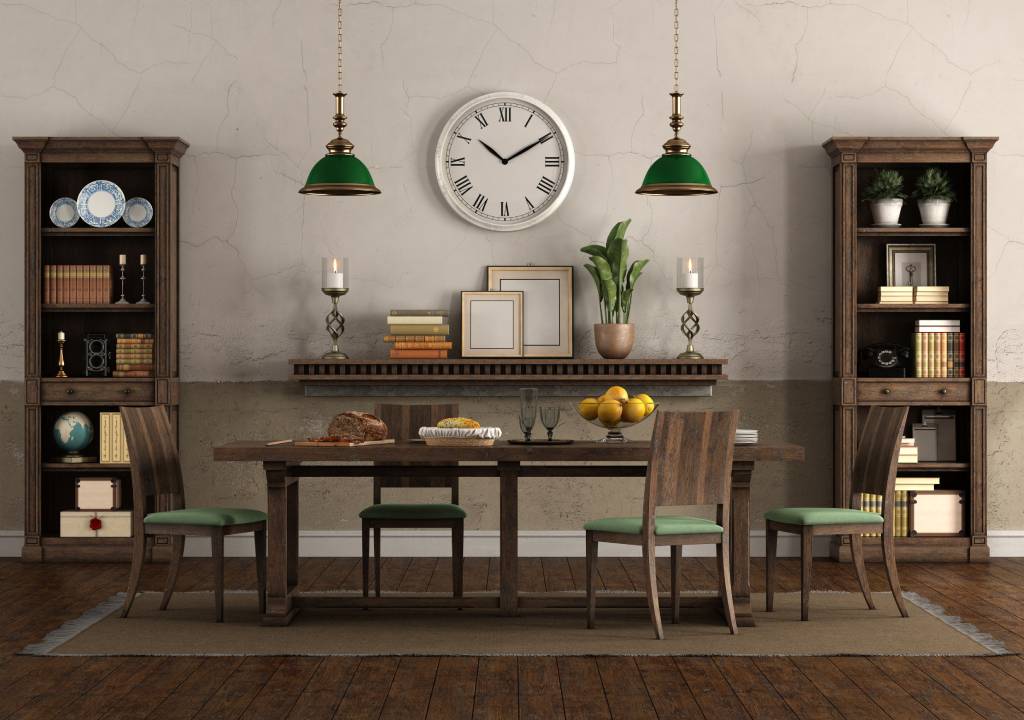The dining room, often considered the heart of a home, is more than just a spot for meals. It’s where laughter is shared, stories are told, and memories are created. As such, furnishing this space requires thoughtful consideration. Here’s a guide to help you curate the perfect dining room ensemble.
1. Comprehensive Space Evaluation
Begin by meticulously assessing the dimensions and layout of your dining room. Use a tape measure to capture the room’s length, width, and height. Take note of any unique architectural elements, such as bay windows or built-in features. This initial step ensures you have a clear spatial understanding, preventing the common pitfall of purchasing pieces that overpower or get lost in the room.
2. Articulating Your Aesthetic Vision
Every individual has a unique design sensibility. Reflect on what resonates with you. Do you gravitate towards sleek contemporary designs, cherish the charm of vintage pieces, or appreciate the warmth of a rustic aesthetic? By pinpointing your style preference, you’ll streamline your furniture search, ensuring a harmonious and personalized dining room ambiance.
3. Functionality at the Forefront
Beyond aesthetics, consider the primary function of your dining space. If intimate family dinners are the norm, a cozy round table might be ideal. Conversely, if you’re known for hosting lavish dinner parties, you’ll need a larger, possibly extendable, table and ample seating. Remember, your furniture choices should enhance the room’s usability.
4. Table Selection as the Room’s Main Focus
The dining table, undoubtedly the room’s focal point, requires careful selection:
- Shape: While rectangular tables are versatile and fit most room configurations, round tables can foster more intimate interactions. Square tables, on the other hand, are perfect for compact spaces and create a sense of symmetry.
- Material: The table’s material can dictate the room’s vibe. Classic wooden tables exude warmth and durability. Glass tables, with their transparent nature, can make a room feel airy and spacious. For those seeking a more avant-garde look, materials like polished metal or luxurious marble might be appealing.
- Size Considerations: A general rule is to maintain a clearance of at least 3 feet around the table. This ensures comfortable seating and easy movement for diners.
5. Harmonizing Comfort and Style with Chairs
While aesthetics are vital, dining chairs should also offer comfort for prolonged seating. Test chairs before purchasing. Consider aspects like back support, seat cushioning, and height relative to your table. Remember, a well-chosen chair not only complements the room’s design but also ensures a comfortable dining experience.
6. Blending Function and Design in Storage Solutions
A clutter-free dining area feels welcoming. To achieve this, integrate storage solutions like sideboards, credenzas, or china cabinets. These pieces can house tableware, linens, and other essentials. When selecting, ensure the design complements other furniture pieces and doesn’t dominate the room.
7. Embracing Flexibility in Design
For homes where space is at a premium, the dining area might serve multiple roles—from a workspace to a hobby corner. In such cases, flexible furniture, like foldable tables or stackable chairs, can be invaluable. They allow easy reconfiguration, adapting to different needs.
8. The Role of Lighting
Lighting, though often overlooked, can dramatically impact a room’s ambiance. A statement chandelier or pendant light can act as a design centerpiece. Ensure the fixture provides ample light for meals but also consider dimmable options for mood setting. Complementary lighting, like wall sconces or floor lamps, can balance and enrich the room’s luminosity.
9. Grounding the Space with Rugs
A well-chosen rug can delineate the dining area, especially in open-plan homes. It introduces texture, color, and warmth. When selecting, ensure the rug’s size accommodates the table and chairs comfortably, even when chairs are pulled out. Given its location, opt for materials that resist stains and are easy to clean.
10. Making the Space Yours with Personal Touches
While main furniture pieces lay the foundation, personal touches infuse the soul into the room. These elements make the space uniquely yours, be it a cherished piece of wall art, a family heirloom displayed in a corner, or a vase of fresh flowers on the table. They narrate stories, evoke emotions, and add depth to the room’s design.
Crafting a dining room that’s both functional and aesthetically pleasing requires careful planning, personal reflection, and informed choices. By delving deep into each aspect of the room’s design, you can create a space that’s not only visually harmonious but also perfectly tailored to your lifestyle. After all, the dining room is more than just a room; it’s a backdrop for life’s cherished moments.
If you are searching for new, high-quality, custom-made dining room furniture from a reputable furniture company, look no further than to Sigla Furniture. Sigla emerges as a breath of fresh air in a world swamped with generic, mass-produced furniture. They are about furniture, experiences, memories, and lasting impressions. Whether setting up a new space or refurbishing an old one, Sigla Furniture promises a blend of style, comfort, and durability.
Check out what The New York Times has to say about it.


